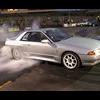Max power vs gear
Announcements
-
Similar Content
-
Latest Posts
-
After the windscreen motor from r31 skyline or pintara, located Grafton NSW
-
I'd do it all again in a heart beat. Well, not all, I'd make some different choices in which mods. But I'd definitely still spend all the money.
-
Hey y'all, Looking local to USA, for just side skirts and rear bumper or half bumper. Pics for reference below: Top is east bear style rear bumper, bottom is uras style rear half bumper. Side skirts are interchangeable. Thanks y'all!
-
Damn, as someone who just glued the damn things in (very slightly askew but better) I wish I saw this, or someone made this. Would be worth linking this to Boosted International. They're always looking for product ideas and this is something they would likely make.
-








Recommended Posts
Create an account or sign in to comment
You need to be a member in order to leave a comment
Create an account
Sign up for a new account in our community. It's easy!
Register a new accountSign in
Already have an account? Sign in here.
Sign In Now